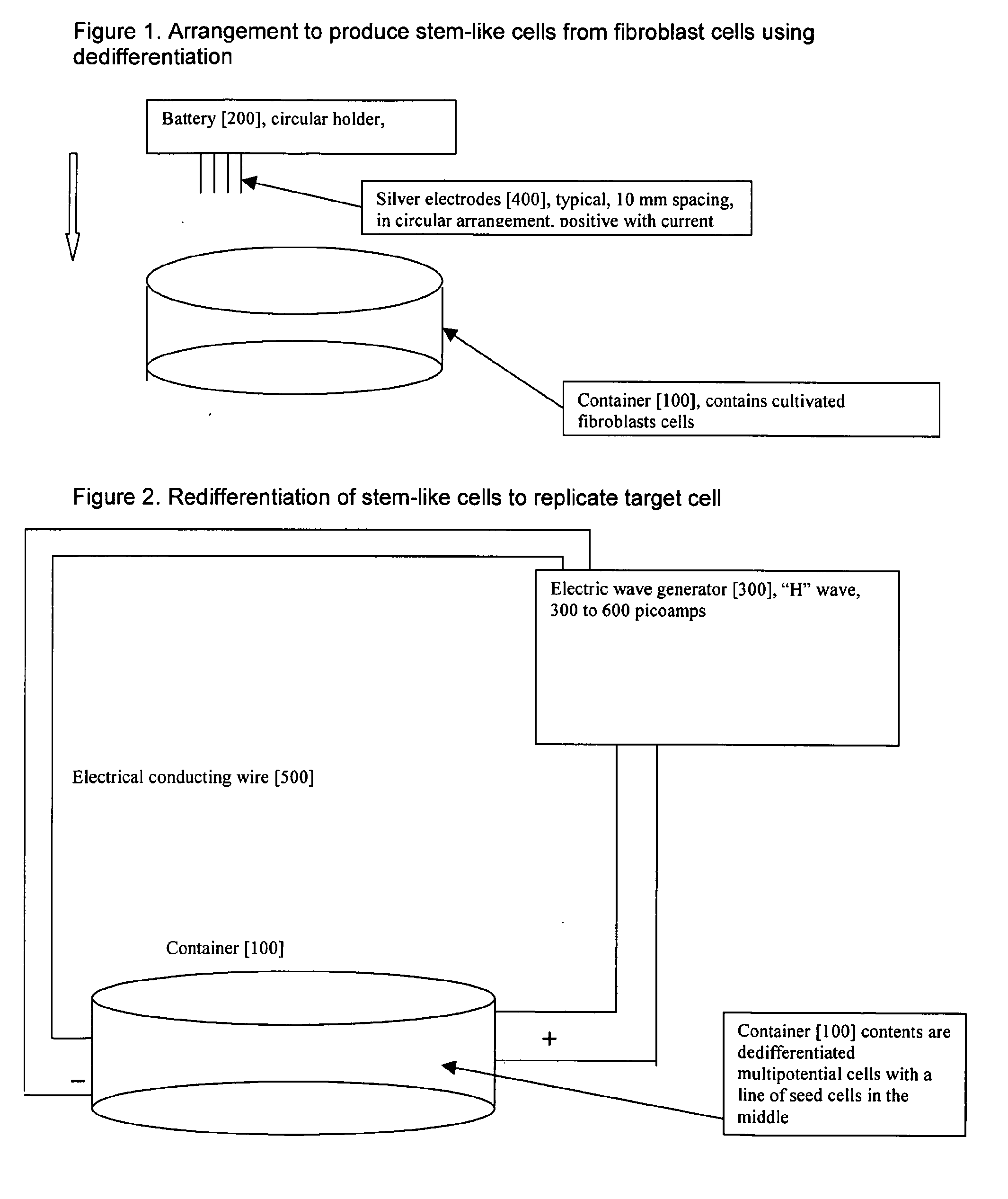Stem-Like Cells
a stem cell and stem cell technology, applied in the field of stem cells, can solve the problems of cost prohibitive requirements, and achieve the effect of effective treatment of many and little chance of rejection
- Summary
- Abstract
- Description
- Claims
- Application Information
AI Technical Summary
Benefits of technology
Problems solved by technology
Method used
Image
Examples
Embodiment Construction
[0046]The present invention provides the technology for achieving a system for production of a large number of stem-like cells using the ex vivo growth and expansion of a small number of fibroblast cells followed by the dedifferentiation of the large number of fibroblast and their conversion to other cell types and forms of tissue. This methodology and system is designed to produce stem-like cells in sufficient quantity to provide therapy and treatment to victims of for example spinal cord trauma and degenerative diseases. It also is designed to culture blood cells to be infused into patients for example who have temporarily lost their ability to maintain said blood cells.
[0047]With reference to FIG. 1, the major components of a preferred embodiment of this stem-like cell production system include a washable and reusable glass dish serving as a container (100) with raised sides. This container is designed to hold the cells to be dedifferentiated and / or redifferentiated. Typically, a...
PUM
| Property | Measurement | Unit |
|---|---|---|
| inner diameter | aaaaa | aaaaa |
| frequency | aaaaa | aaaaa |
| current | aaaaa | aaaaa |
Abstract
Description
Claims
Application Information
 Login to View More
Login to View More - R&D
- Intellectual Property
- Life Sciences
- Materials
- Tech Scout
- Unparalleled Data Quality
- Higher Quality Content
- 60% Fewer Hallucinations
Browse by: Latest US Patents, China's latest patents, Technical Efficacy Thesaurus, Application Domain, Technology Topic, Popular Technical Reports.
© 2025 PatSnap. All rights reserved.Legal|Privacy policy|Modern Slavery Act Transparency Statement|Sitemap|About US| Contact US: help@patsnap.com


